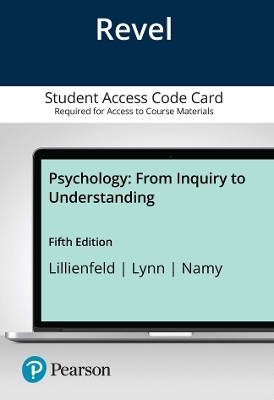
Understanding Developmental Disorders – A Causal Modelling Approach
Wiley-Blackwell (Hersteller)
978-0-470-77330-7 (ISBN)
- Keine Verlagsinformationen verfügbar
- Artikel merken
John Morton is the former Director of the Medical Research Council's Cognitive Development Unit. He is now Visiting Professor in the Department of Psychology and Honorary Fellow of the Institute of Cognitive Neuroscience, University College London.
Introduction. Chapter 1 Introducing Cause. Cause and Public Issues - 'Working Mums Blamed for Children's Failures'. Cause and Individual Events - 'Why Did Romeo Die?'. Why Look at Cause?. Some More Reasons for Not Looking at Individual Cases. The Need for a Framework for Thinking In. Creating a Tool - The Problem of Notation. An Example of The Limits of Language. An Invitation to Consider Diagrams as a Tool. A Tool for Representing Causal Relationships. Chapter 2 Introducing Cognition. One Thing I Do Want You to Believe. Reductionism. Can We Rely on Behaviour?. The IQ Example - A Note of Caution. Why Cause Needs Cognition. Chapter 3 Representing Causal Relationships. Categorizing Facts. The Causal Notation. Starting a Causal Model for Autism. Complications. Some Easy Stuff On Cause and Correlation. Other Notations. Chapter 4 Causal Accounts of Autism. How Causal Modelling Started. The Merry-Go-Round of Circular Reasoning. The Biological Origin of Autism. The Role Of Cognition in Defining Autism. What is Mentalizing?. Changes over Time. The Non-Social Features of Autism: How to Diagram Ideas on Weak Central Coherence in Autism. Chapter 5 The What and the How. Ground Rules Of Causal Modelling. Chapter 6 Competing Causal Accounts of Autism. Representing the Effects of Environmental Factors. Cognitive Theories of Autism. Chapter 7 The Problem of Diagnosis. Diagnosis and Cause - Relying on Behaviour. The Spanish Inquisition Example - The Dangers of Labelling. Problems Of Diagnostic Practice. Variability. Changes over Time: Improvement and Deterioration. Diagrams for Individual Cases and Diagrams for Disorders in General. The Variability of the Phenotype. Chapter 8 A Causal Analysis Of Dyslexia. The Dyslexia Debate: Is There Such a Thing as Dyslexia?. The Discrepancy Definition of Specific Reading Disability. Towards a Cognitive Definition. An X-Type Causal Model of Dyslexia. Biological Factors. Cognitive Factors. Difficulties of the Beginning Reader. Associated and Secondary Problems. General and Specific Deficits. Competing Theories of Dyslexia. Non-Biological Causes. Other Biological Causes of Reading Failure. Chapter 9 The Hyperkinetic Confusions. Drugs As Diagnostic Refinement. Types of Theory. The Problem of Comorbidity - Conduct Disorder and ADHD. The Cognitive Level. Sonuga-Barke's Dual Pathway Model. Chapter 10 Theories of Conduct Disorder. Violence Inhibition Mechanism (VIM) Model. The Social Information Processing Model for Aggressive Children. Coercive Parenting Model of Patterson. The Theory of Life-Course Persistent Antisocial Behaviour. Chapter 11 Tying in Biology. Relations between the Cognitive and Biological Levels. Equivalence: Brain to Cognition. Causal Influences from Cognition to Brain. Genes and Cause - the End of Behaviour Genetics. Endophenotypes. Mouse (and Other) Models for Human Disorders. Chapter 12 To Conclude. References. Name Index. Subject Index. .
| Erscheint lt. Verlag | 28.2.2008 |
|---|---|
| Verlagsort | Hoboken |
| Sprache | englisch |
| Maße | 168 x 240 mm |
| Gewicht | 612 g |
| Themenwelt | Geisteswissenschaften ► Psychologie |
| ISBN-10 | 0-470-77330-8 / 0470773308 |
| ISBN-13 | 978-0-470-77330-7 / 9780470773307 |
| Zustand | Neuware |
| Haben Sie eine Frage zum Produkt? |
aus dem Bereich
